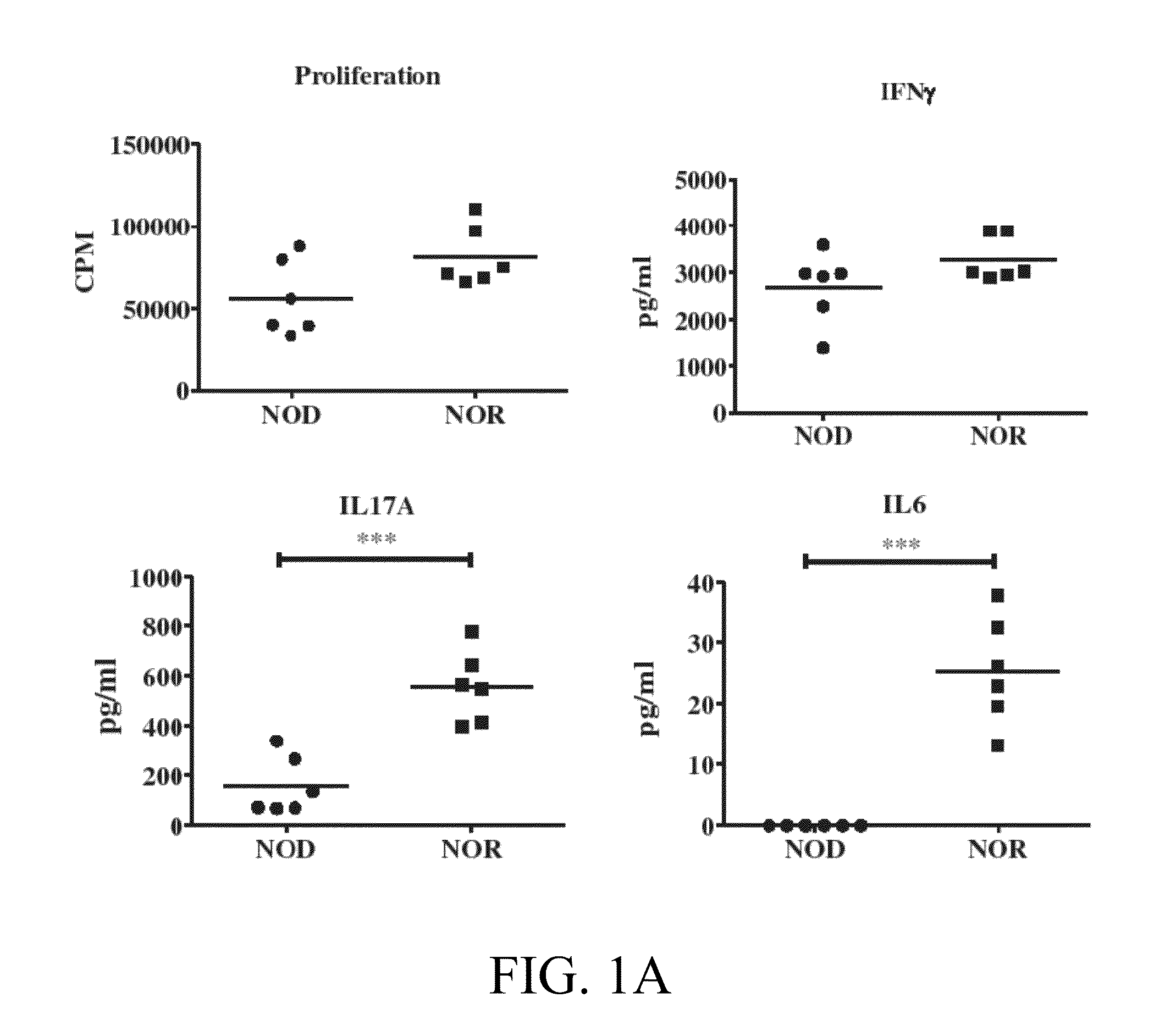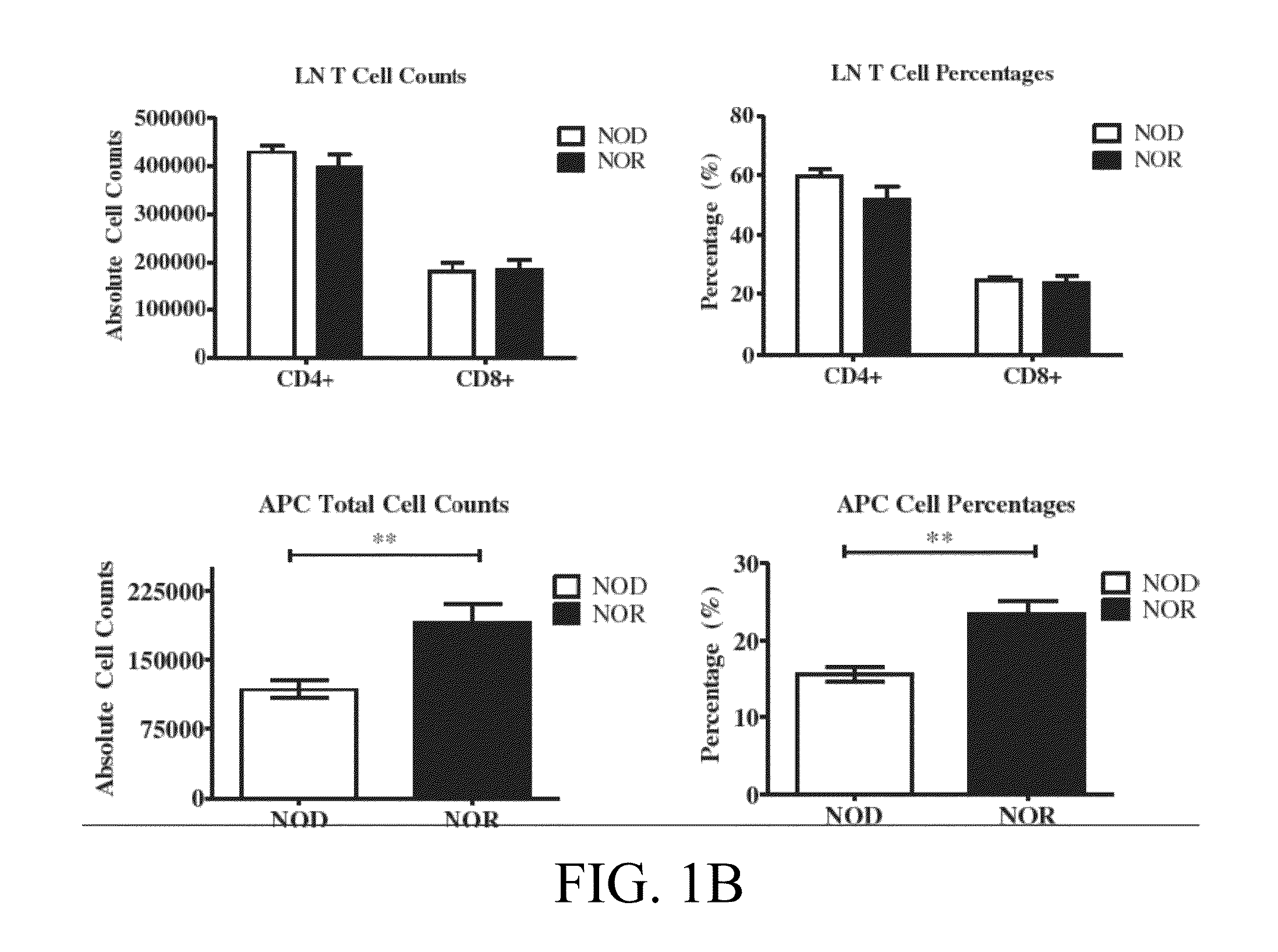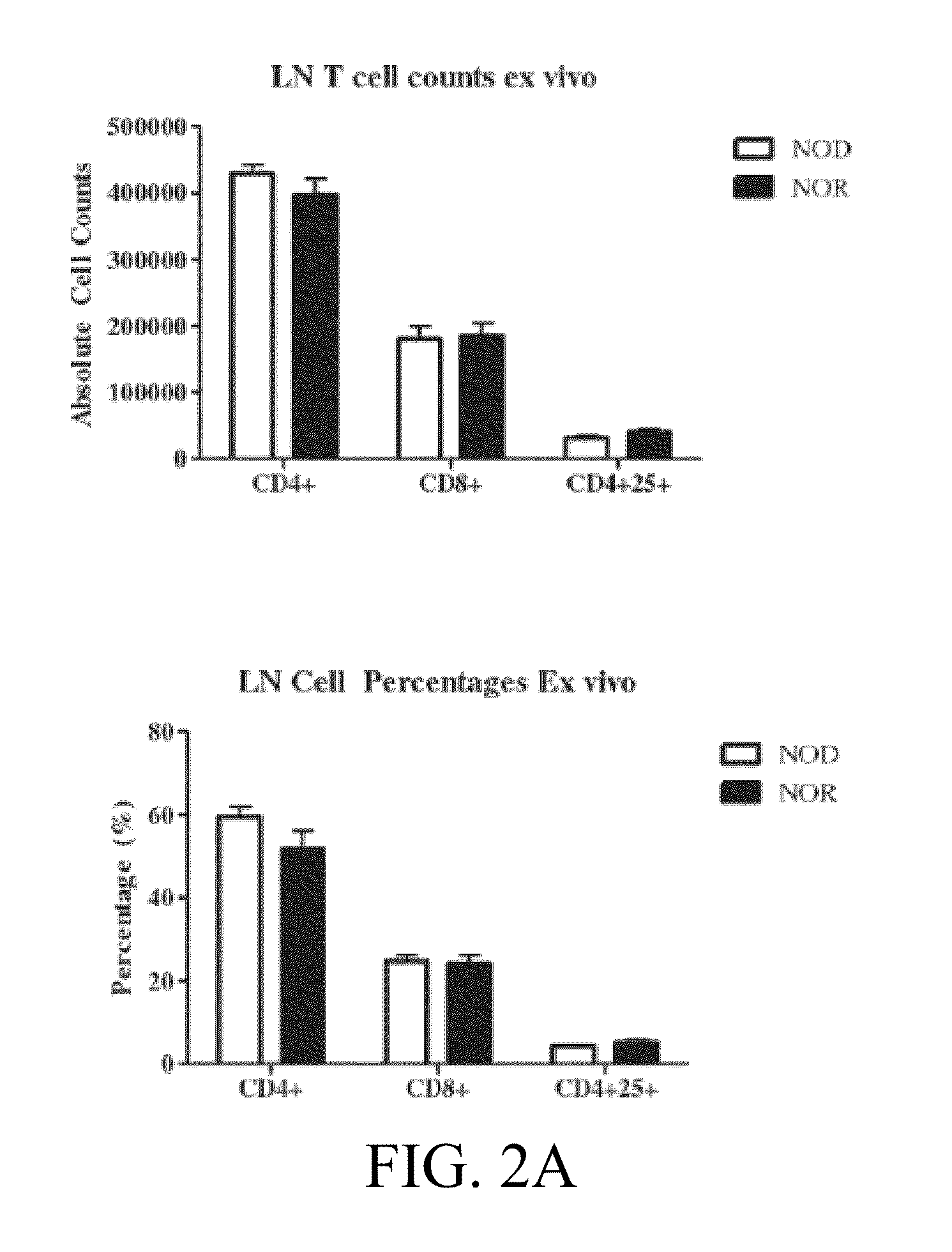Novel type 1 diabetes vaccines, and methods of use
a type 1 diabetes and vaccine technology, applied in the field of new type 1 diabetes vaccines and methods of use, can solve the problems of impaired glucose metabolism with attendant complications, insufficient insulin production, and abnormal oral glucose tolerance tests (ogtts), and achieve the effects of reducing severity or progression, and preventing or delay the onset of t1d
- Summary
- Abstract
- Description
- Claims
- Application Information
AI Technical Summary
Benefits of technology
Problems solved by technology
Method used
Image
Examples
example 1
Diminished Peripheral Th17 Differentiation and APC Frequency is Correlated to T1D Onset
[0077]In order to better understand the relationship betweenTh17 differentiation and T1D onset, IL17 production by stimulated NOD T lymphocytes was compared to that of NOR lymphocytes. Although proliferation and IFNγ production were comparable in activated NOD and NOR peripheral LN suspensions, three-fold more IL17 was produced by NOR lymphocytes (FIG. 1A). Since APC derived IL6 is required for TH17 differentiation, its production was measured in the NOD and NOR LN suspensions. Whereas no IL6 production was detected within NOD LN suspensions, IL6 production was readily observed within the activated NOR LN suspension (FIG. 1A). Together, these data show that in vitro activated LN suspensions from diabetes resistant NOR mice possessed higher levels of Th17 differentiation than pre-diabetic NOD counterparts.
[0078]As differences in Th17 differentiation between NOD and NOR LN suspensions could be due t...
example 2
Lymphocytes in Pancreas of NOD Mice Exhibit Reduced Th17 Bias Compared to those Present in NOR Pancreas
[0081]NOR and NOD mice experience leukocytic infiltrations of the pancreas, however NOR mice are resistant to insulitis and T1D. Since reduced amounts of IL17 were observed in the peripheral LN of NOD mice compared to NOR, differences in Th17 associated factors within the leukocytic infiltrations of the pancreas were studied. Frozen-OCT embedded sections from the pancreases of both strains were generated, which were processed to either generate H&E stains or to measure the presence of Th17 related RNA. Sequential sections were utilized so that infiltrates shown in the H&E histology could be compared to RNA message levels.
[0082]Leukocytic infiltrations were observed in pancreatic H&E stains from both pre-diabetic 12 week old NOD and age-matched NOR mice (FIG. 3A). The NOD pancreas, however, possessed significantly more T lymphocyte infiltration and profound insulitis (as denoted by ...
example 3
NOD and NOR Mice Possess Distinct Th17 Biases in Mesenteric LN which is Correlated to Diverse Microbial Communities
[0085]The mesenteric LN of NOR and NOD mice were examined for distinctions in cytokine profiles.
[0086]Although mesenteric LN cells isolated from NOD mice possessed 50% more CD3 message, IL17 message levels were significantly lower in the NOD mesenteric LN (mLN) compared to the NOR. The Th17 specific transcription factor, RORγt, and surface protein, IL23 receptor (IL23R) were also consistently lower in the NOD mLN (FIG. 4A, 5). Notably, message levels for IL23 (required to sustain the Th17 phenotype), but not IL6 were consistently lower in the mLN of NOD mice compared to NOR (FIG. 5).
[0087]Although lymphocytes present in the gut preferentially track to the pancreatic LN, distinctions in Th17 associated factors were not observed within the pancreatic LN (FIG. 6).
[0088]Together, these data show that pancreas and mLN of spontaneously diabetic NOD mice, possess a significant...
PUM
| Property | Measurement | Unit |
|---|---|---|
| time | aaaaa | aaaaa |
| time | aaaaa | aaaaa |
| thickness | aaaaa | aaaaa |
Abstract
Description
Claims
Application Information
 Login to View More
Login to View More - R&D
- Intellectual Property
- Life Sciences
- Materials
- Tech Scout
- Unparalleled Data Quality
- Higher Quality Content
- 60% Fewer Hallucinations
Browse by: Latest US Patents, China's latest patents, Technical Efficacy Thesaurus, Application Domain, Technology Topic, Popular Technical Reports.
© 2025 PatSnap. All rights reserved.Legal|Privacy policy|Modern Slavery Act Transparency Statement|Sitemap|About US| Contact US: help@patsnap.com



